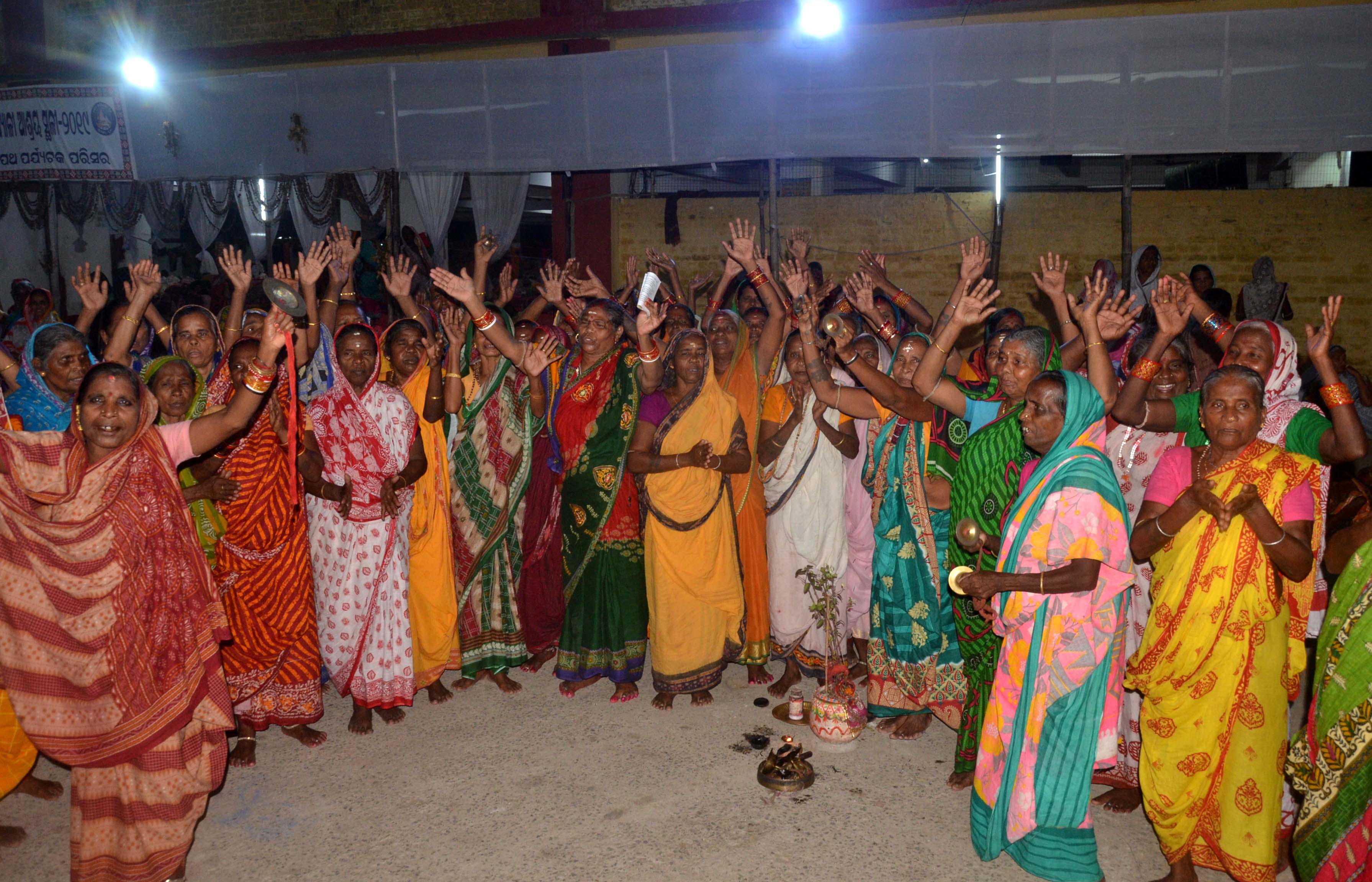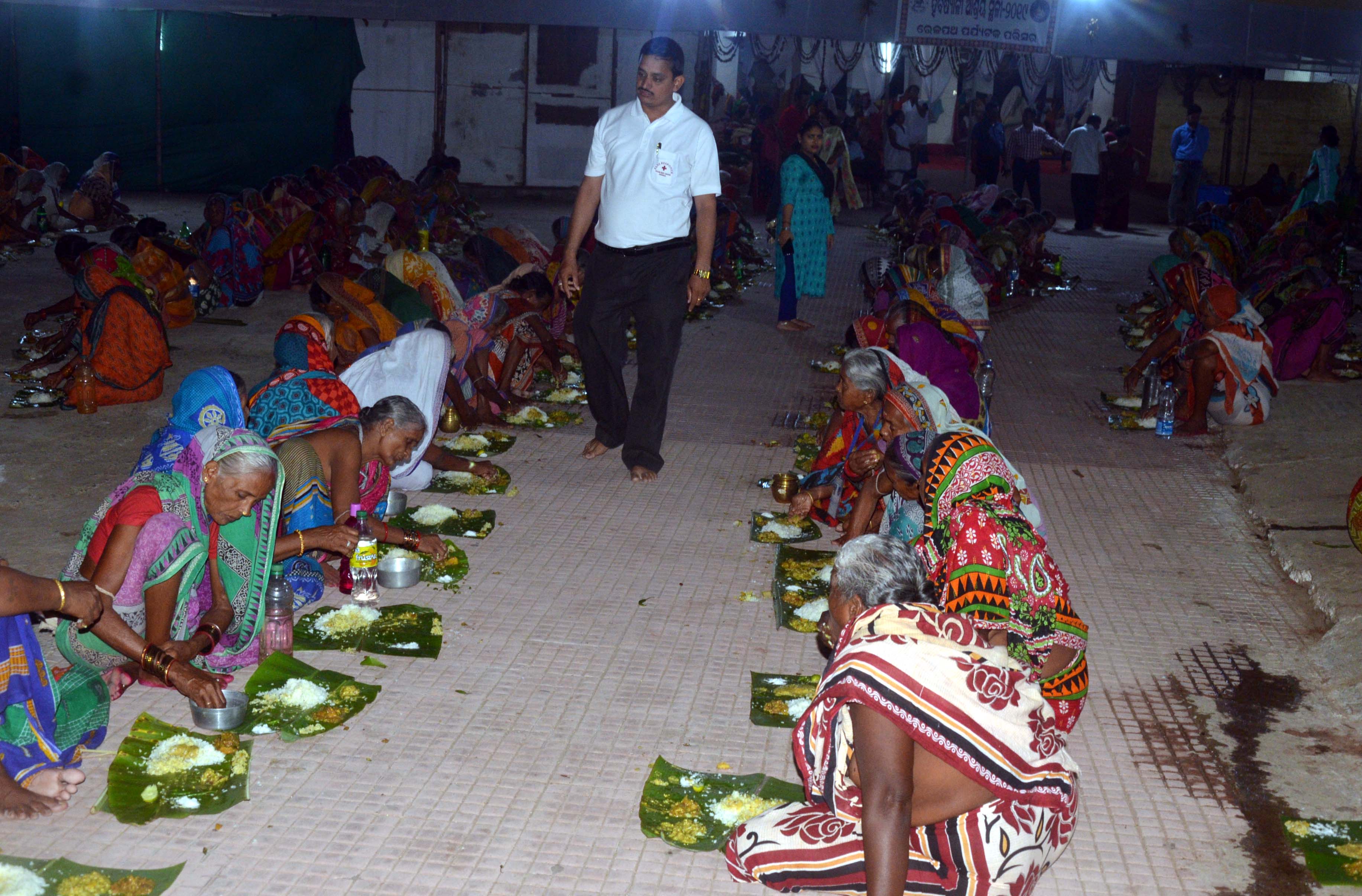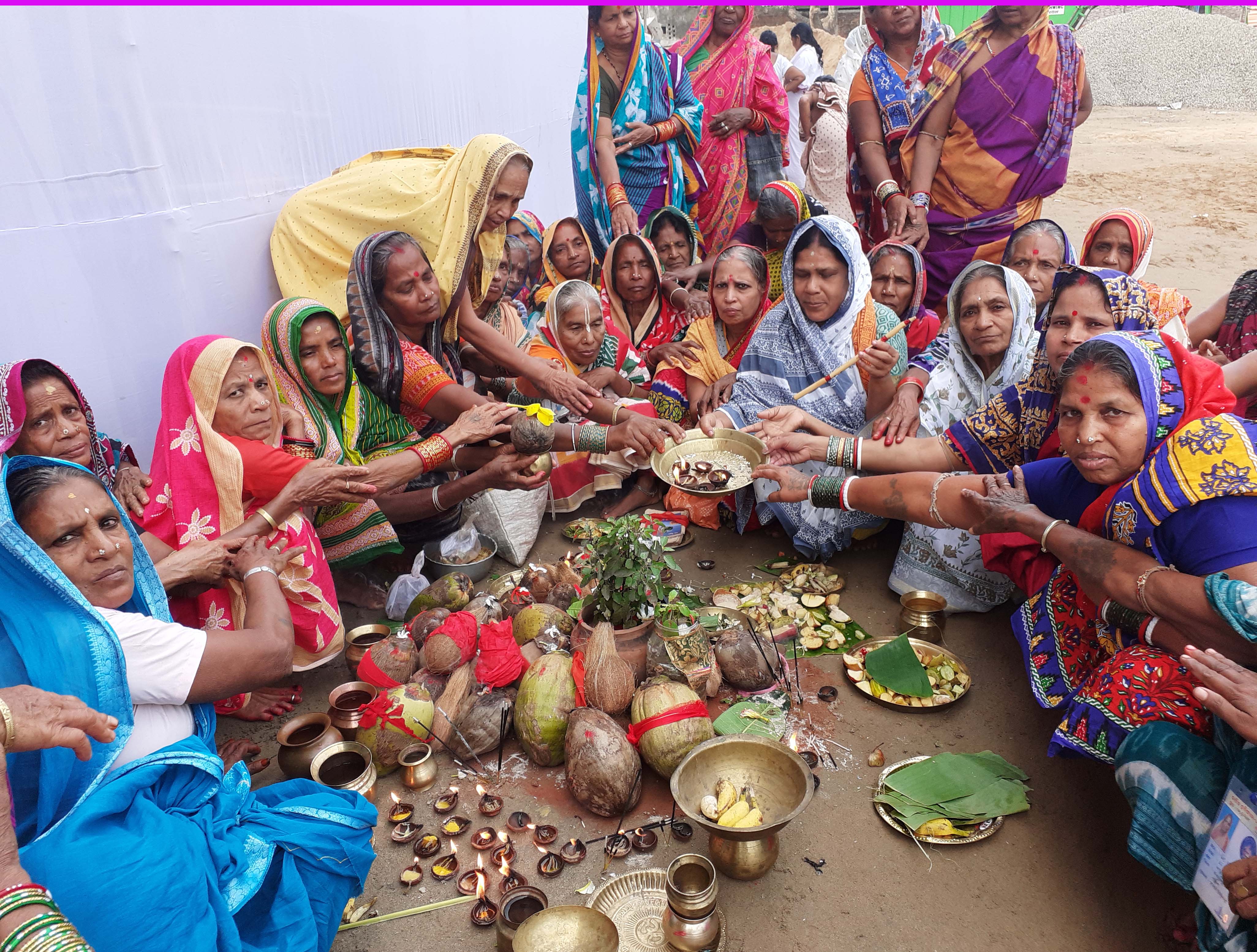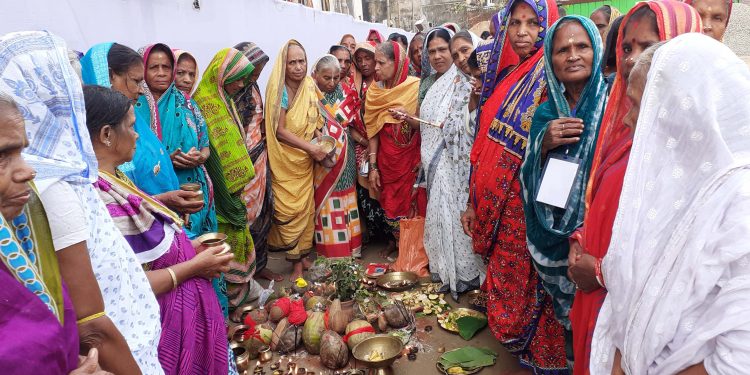The holy month of Kartik is said to be endowed with divine influence. It is also believed to be the favourite month of Lord Vishnu and Lord Shiva. No wonder, Odias, widows and elderly women in particular, throng to the Holy City Puri in thousands to offer special puja to Radha Damodar, another embodiment of Radha and Lord Krishna. As known as habisyalis in local language, the devotees observe Kartika Brata and practice certain rituals that are followed throughout the month. This year, the Puri district administration has made provisions for accommodating around 3,000 such devotees in the city. Sunday POST talks to a few habisyalis to know more about the rituals.
About the rituals
The widows and elderly women, or the habisyalis, perform ‘sankalp’ during a small puja to observe Kartika or Habisa Brata with austerity. During their month long stay in Puri, they wake up before sunrise and complete their daily chores followed by a holy dip in Mahodadhi. They then perform the ‘baluka puja’ during which they draw rangolis of various patterns in front of a ‘tulasi choura’ or basil platform. The blow of conch shells and ‘hulahulis’ create a different ambience altogether.

Following that, they worship Lord Vishnu and Lord Shiva in groups and recite chapters from the Kartik Purana, a holy book read during this month. The devotees next move to Srimandir to witness mangal arati. They take food only once a day that too before sunset. For the entire month, they consume either the Mahaprasad from Srimandir or self-cooked meals, known as habisha. A lot goes into preparing habisha. Certain vegetables like different varieties of gourds, brinjal, a large number of pulses and a few leafy vegetables cannot be part of this meal.
Habisyalis speak
Sixty-five-year old Sabari Dei, a resident of Padiapada, says, “I am here for the first time to observe Kartik Brata. Although I had long desired to start practicing this ritual, I couldn’t do so, owing to lack of money. I could come to Puri this year, thanks to my daughters and in-laws who bore my travel expenses. My visit wouldn’t have been possible without the blessings of Lord Jagannath. All I wish now is to attain salvation in Srikhetra and get cremated at Swargadwar.”
Bishupriya Padhi, another Habisyali from Bhubaneswar has been observing this brata for the last 25 years. “Many widows prefer going to Lingaraj temple to practice these rituals but I prefer coming to Srikhetra. Also, the Mahaprasad lures me to Puri dham every year. Earlier, I used to rush to the temple early in the morning to get a glimpse of the mangala arati. However, my mobility was restricted after I fractured my leg in a mishap a couple of years back. Earlier, I used to stay in lodges but this year we have been accommodated in the camp put up by the administration.”

Sixty four-year old Sarojini Pati from Bhubaneswar, says, “I lost my husband six years ago and since then I have been observing Kartik Brata. However, I started coming to Puri only four years ago. Words aren’t enough to describe the satisfaction I get observing Katik Brata. I also like being part of the numerous other religious things practiced in Puri. The government has made things easy for us by setting up Habishyali Kendras (centers) at four places in Puri town.”
The general notion is that only widows practice Habisha Brata. Meet Annapurna Bhola, a sexagenarian from Khurda, who started practicing Habisha Brata 15 years ago when her husband was still alive. Annapurna, who her husband seven years ago, says, “I used to practice the rituals at my village but started coming to Puri after learning about the elaborate arrangements made by the administration for the safety of women. In 2017, I came in Puri five days before the Kartik month ended. After my husband’s death, I have surrendered myself to Lord Jagannath and he is everything for me now.”
Puspalata, who has travelled all the way from Baripada to join the habisyalis in Puri, says, “I started observing Habisa Brata soon after my marriage. Earlier, I used to go to Vrindavan. At times, I also used to observe Habisa Brata at my home town. However, I was still not getting the inner solace that I was looking for till I came to Puri.”

Recalling an interesting incident Puspalata says, “Once I was coming to Puri with my son during the month Kartik. We reached the railway station but my son failed to board the coach in commotion. I was all alone with the luggage. Panicked, I started praying to Lord Jagannath. Suddenly, a boy appeared in front of me and enquired if I needed any help. Then, he accompanied me to Puri and left only after I reached my destination. It was nothing but divine interference that came to my rescue. I always believe that Lord Jagannath has been taking care of me after my husband’s death. Holding the brata is just a small attempt to show my gratitude.”
Expert speak
Dr Surendra Mishra, a researcher of Jagannath culture, says, “Puri Dham is also known as Mukti Khetra. Throughout the month of Kartik, Puspalak servitors adorn Lord Jagannath Raidamodar Besha. Damodar is another name of Krishna and Rai is Radha. It is believed that those who worship Lord Jagannath during this month, much like Radha used to do, are destined to get the choicest blessings of the Lord. According to the Sankalpa rituals, women need to follow certain rules. Those who observe Kartika Brata, take a holy dip in Mahodadhi, worship Mahaprabhu and have the Mahaprasad. By doing so, they come closer to Lord Jagannath. Nowhere in the world would you find the convergence of Mahodadhi, Mahaprasad and Mahaprabhu. All these things attract habisyalis to Puri Dham and follow the rituals. Lord Jagannath is being adorned with Raidamodar besha for more than 700-800 years now. However, it is difficult to say the exact time when women started coming to Puri to observe Kartika Brata.
Jagannath culture researcher Naresh Das says, “Srikhetra is one of the four dhams in the country. Besides, taking a dip in Mahodadhi, witnessing Lord Jagannath’s different attires and having the Mahaprasad, habisyalis also get a chance to visit Pancha Tirtha –Indradyumana Tank, Rohini Kunda, Markendeya Tank, Swetaganga Tank and the sea — all located in the Holy City. In other dhams, they don’t get this opportunity, which is another reason behind a large number of women visiting Puri to observe Kartik Brata.”
Significance of Kartika month
- Kartika month is significant because it comes at a time when the sun travels southwards on the celestial sphere, which is considered the most auspicious time for prayers
- According to the Vedas, Lord Vishnu goes to sleep on Ashadha Ekadashi and wakes up on Kartika Shukla Ekadashi
- It is believed that during Kartika month, Lord Shiva and Lord Vishnu pay a visit to the Earth
- Lord Shiva killed the devil Tripurasura in the month of Kartika and protected the world
- In Kartika month, the holy river Ganga enters the other rivers, thus making them as sacred as Ganga
- Science says, in Kartika month gains more magnetic power from the Earth before sunrise. This may be a reason for taking a bath before sunrise during this month.
RASHMI REKHA DAS, OP






































